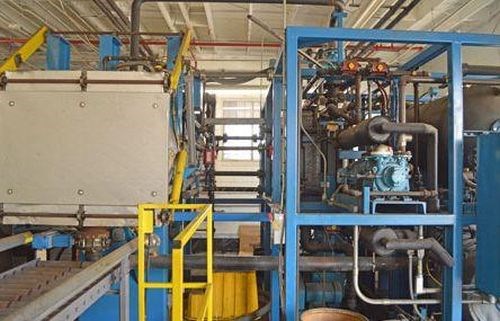Effective Vapor Degreasing Operations
Cleaning can be an expensive step in the production process, but its value can be measured based on losses that would be incurred without these procedures. This vapor degreasing system is performing as expected.

This airless system uses solvents in a controlled atmosphere and totally recovers them for re-use.
Cleaning can be an expensive step in the production process, but its value can be measured based on losses that would be incurred without these procedures. Are reject rates kept to a minimum? Are subsequent surface finishing operations consistently successful?
In some critical applications such as medical and aerospace, the importance of the part finish is obvious. But in others it might not be so clear. In either case, though, when the parts go out the door, the customers better be happy with what they receive. The further into the production schedule that flaws are found, the more costly they become, and when they’re found while in the customer’s hands, the biggest expense may be the loss of future business.
In the article "Appreciating the Value of Secondary Production Processes," we look at a job shop that offers services for parts cleaning, impregnating and final leak testing. About half of the parts the company processes go through its closed-loop vapor degreasing system with built-in distillation, heated vacuum solvent recovery. With low emissions and more than 97-percent recovery from the waste stream, this system performs very effective deep cleaning and drying on complex features.
Related Content
-
Meeting Stringent Cleaning Goals With Modular Ultrasonic System
A knee implant manufacturer implements an advanced cleaning system that meets its tight cleaning requirements, including documenting, validating and tracing the entire cleaning process.
-
Sita’s CleanoSpector Measures Part Cleanliness
PMTS 2023: Handheld measuring device checks for cleanliness of parts to assure product quality as well as prior to follow-up processes.
-
A ‘Clean’ Agenda Offers Unique Presentations in Chicago
The 2024 Parts Cleaning Conference, co-located with the International Manufacturing Technology Show, includes presentations by several speakers who are new to the conference and topics that have not been covered in past editions of this event.







.jpg;maxWidth=300;quality=90)





